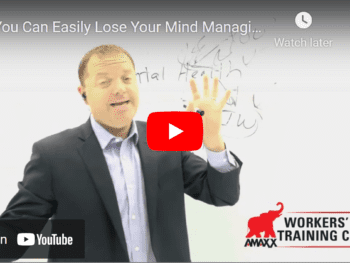
What is a Risk Manager?
A risk manager is an individual who is uniquely positioned within a company to drive a culture of safety and ensure program efficiency. In terms of workers’ compensation programs, the risk manager is someone who can prepare insurance budgets, properly allocate claim costs, and drive lower premiums through return to work and other injury management best practices. This includes a constant evaluation of the loss experience and deciding to improve efficiency. The bottom line is the risk manager plays an important role in any workers’ compensation program.
Determining Claim Management Arrangements
One function of a risk manager is to determine the type of claim management arrangement for an organization. Factors to consider include the company’s size features unique to the company that demands a specialized claim handling team and other factors related to the insurance climate in the jurisdiction. A risk manager can also consider the company’s ability to self-insure is feasible.
Other factors to consider include:
- Claim volume and past claims experience. It is also essential to understand how teams handle claims and the number of files assigned to each claim handler;
- Best practices and ability of an insurance carrier or third-party administrator (TPA) to handle claims unique to an industry. It is crucial to the insurance carrier or TPA to understand their clients; and
- The ability of a claim management team to communicate and drive claims toward settlement.
A seasoned risk manager will likely want to visit a claims team in person before making any determinations. They can also attend seminars or other industry-related events to meet leaders within various organizations before making any final decisions.
Establishing Performance Benchmarks
An essential part of risk management is determining what the company wants to fix, accomplish, or avoid. Setting defined goals is an important part of the process. A focus should always be on paying all claims ethically and honestly. Handling claims with empathy is also essential.
Prepare risk management and insurance budgets and allocate claim costs and premiums to departments and divisions. Provide for the establishment and maintenance of records, including insurance policies, claim, and loss experience.
Critical areas of considering in any effective and efficient workers’ compensation program should include:
- Mitigating exposure on catastrophic losses. These are losses that include loss of limb, quadriplegia, and those that have a psychological and/or psychiatric component;
- Increases the frequency that claims are closed. The only good file is a file that is closed – and remains closed — mitigating significant losses.
- Loss reduction via on-site ergonomic site assessments. This is something to consider for any employer – no matter how small. It is also not limited to office-based jobs or clerical positions. Every job has an ergonomic component to consider.
- Conducting and services provided by service providers. Many third parties are involved in the workers’ compensation system. It is important to analyze the services provided by these parties and ensure efficiency.
An involved risk manager will also look for opportunities to improve overall business processes in other collateral matters. This can include interacting with other risk managers to better understanding best practices and effectuate change within their organization.
Conclusions
Risk managers play an important role in every workers’ compensation program. In order to be a successful risk manager, it is essential to determine the proper management of claims and work to control losses based on established benchmarks. Through these policies, a workers’ compensation program can properly function.
 Author Michael Stack, CEO Amaxx LLC. He is an expert in workers’ compensation cost containment systems and helps employers reduce their workers’ comp costs by 20% to 50%. He works as a consultant to large and mid-market clients, is a co-author of Your Ultimate Guide To Mastering Workers Comp Costs, a comprehensive step-by-step manual of cost containment strategies based on hands-on field experience, and is the founder & lead trainer of Amaxx Workers’ Comp Training Center, which offers the Certified Master of Workers’ Compensation national designation.
Author Michael Stack, CEO Amaxx LLC. He is an expert in workers’ compensation cost containment systems and helps employers reduce their workers’ comp costs by 20% to 50%. He works as a consultant to large and mid-market clients, is a co-author of Your Ultimate Guide To Mastering Workers Comp Costs, a comprehensive step-by-step manual of cost containment strategies based on hands-on field experience, and is the founder & lead trainer of Amaxx Workers’ Comp Training Center, which offers the Certified Master of Workers’ Compensation national designation.
Contact: mstack@reduceyourworkerscomp.com.
Workers’ Comp Roundup Blog: https://blog.reduceyourworkerscomp.com/
©2021 Amaxx LLC. All rights reserved under International Copyright Law.
Do not use this information without independent verification. All state laws vary. You should consult with your insurance broker, attorney, or qualified professional.






